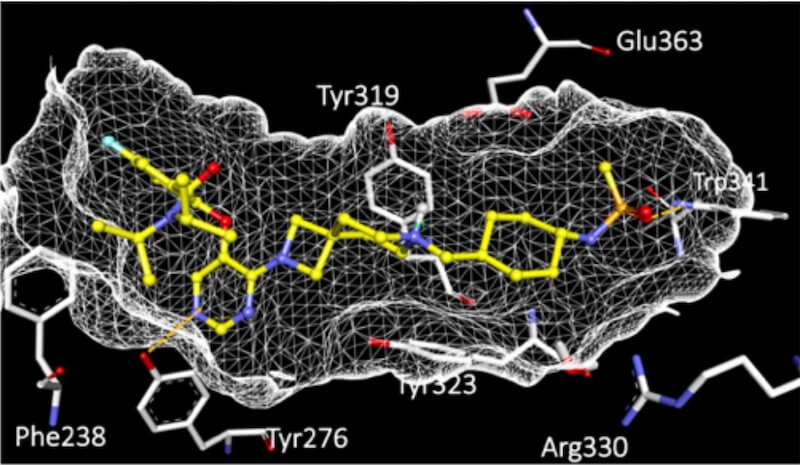Leukemias involving reshuffling or rearrangement of the mixed lineage leukemia (MLL) gene, known as MLL-rearranged or MLL-r leukemias, account for 70 to 80 percent of acute leukemias in infants under one year old. In these blood cancers, a subset of acute myeloid and acute lymphoid leukemias (AML and ALL), the MLL gene breaks and reattaches to the wrong section of the chromosome.

Such translocations occur in about 10 present of human leukemias. The resulting “fusion” proteins bind to chromatin — the long fibers in which DNA and related proteins are packaged — and disrupt the activity of genes. This makes for particularly aggressive disease, so the prognosis of MLL-r is often poor, especially in infants with ALL. Better, less toxic treatments are greatly needed.
A new study in mice and human cell lines, published by Cancer Cell, finds promise in a targeted, orally bioavailable compound that inhibits a key growth pathway in MLL-r leukemia. The strong findings set the stage for clinical trials in patients, says Scott Armstrong, MD, PhD, of Dana-Farber Cancer Institute and Boston Children’s Hospital.
“It has been well established that the abnormal ‘fusion’ proteins generated from MLL rearrangements interact with certain epigenetic regulatory proteins to promote leukemia — and that blocking those interactions offered a promising approach to therapy,” says Armstrong, who was co-senior author on the paper with Richard B. Lock, PhD, of Children’s Cancer Institute, Sydney, Australia. “In this study, we’ve shown that an agent that targets those interactions can reverse human leukemia development in animal models, a strong indication that they should succeed in human patients as well.”
This study and related research have now led to a clinical trial of this therapeutic approach, using a drug called SNDX-5613. The trial began in adults and is now open to children as young as 1 month of age with relapsed or refractory acute leukemia (ALL, AML, or mixed lineage). Patients with KMT2A (MLL) gene rearrangements or nucleophosmin 1 (NPM1) mutations are eligible. See the trial protocol for more information.

Blocking genetic disruption of leukemia
One way that fusion proteins wreak genetic havoc is by binding to protein clusters called chromatin-associated protein complexes. A protein within these complexes, named Menin, links up with MLL-fusion proteins to spur the development of leukemia cells. The researchers tested a compound known as VTP50469, a small molecule designed to break up the interaction by wedging itself between Menin and MLL-fusion proteins.
In both laboratory cell lines and mouse models of human MLL-r leukemia, treatment with VTP50469 led to sharp decreases in the number of leukemia cells. Treated mice had substantial reductions in the amount of cancerous tissue, and many remained disease-free more than a year after treatment. Treated leukemia cells showed changed gene activity, differentiating to behave more like normal white blood cells, and were more likely to die off. Finally, VTP50469 appeared to act only at specific sites in the genome, resulting in lower toxicity than might be expected with this type of drug.
“VTP50469 demonstrated remarkable activity against this leukemia subtype and even appeared to eradicate the disease in multiple mice carrying MLL-r B-cell ALL,” says Armstrong. “Given the success in animal models, we’re looking forward to evaluating this approach in clinical testing in patients.”
Andrei Krivtsov, PhD, of Dana-Farber and Boston Children’s Hospital, is first author on the paper. See the paper for a full list of authors, funding organizations, and disclosures.
